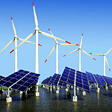- Home >
- Our Actions >
- Ambassador report
2
Comments
[November Free Report] Layers of Atmosphere and Stratospheric Cooling |
||||||||||||||
|---|---|---|---|---|---|---|---|---|---|---|---|---|---|---|
|
by Gokce Nur AYAZ | 26-11-2021 08:17
|
||||||||||||||
|
Layers of Atmosphere and Stratospheric Cooling Global warming is a concept that we are all aware of by now. We know that it effects our atmosphere but the layers might differ in terms the effect they present and this might be foreign to some of us. The layers of atmosphere can be seen below, it is the representation of NASA Global Climate Change Website. Figure 1 Atmospheric Layers
Global warming is often affecting each layer in different ways. Firstly, explaining the layers and their properties might help us to understand more about the effects. Troposphere:
Stratosphere
Mesosphere
Thermosphere
Exosphere
The Edge of The Outer Space
· However, most of the scientists used what is called the ‘Karman Line’ to define a boundary. (if you wish to learn more, you can read more about Karman Line in here : https://astronomy.com/news/2021/03/the-krmn-line-where-does-space-begin) Figure 2 Karman Line Why Is There a Stratospheric Cooling and Tropospheric Warming? Based on the several independent analysis measurements taken by radiosondes and satellite sensors, the troposphere has warmed up and the stratosphere has cooled down since mid- 1970s. Troposphere (lower atmosphere) is warming from the bottom and the reason is radiation passing straight through atmosphere and is absorbed by earth’s surface, which warms up the surface and consequently warms up the atmosphere from beneath. And as air warms up the convection movement in the atmosphere dominates the temperature profile. In contrast to this, the stratospheric layer is warmer at the top because of the solar absorption of O2 and O3. In a situation which this absorption by O2 and O3 do not occur, the stratosphere would be cooler at the top since it will only receive heat from troposphere, which means from below. With the increase of greenhouse gases and the ozone depletion, the climate models started to include these two. Change in lower stratospheric trends might indicate the ozone depletion recovery (although there are discussions about it) according to Rolf Philipona et al.’s study. It might be a likely driver for the explanation of how stratospheric cooling started to be observed as lower stratospheric warming via satellite measurements in 21st century.
These measurements are usually taken by radiosonde and satellites. They are both using what is called ‘remote sensing’ however radiosonde is usually a weather balloon, can be also a rocketsonde. Figure 3 Radiosonde
With radiosonde , there are also a grounding system which ‘grounds ’ the data.
This ground system device is utilized for synoptic (horizontal length scale of the order of 1000 km), research and military usage to provide upper air profile data. Usually people get scared and feel panic when they find a Radiosonde fell on the ground. However, there is no need to be scared. It is usually not toxic or harmful yet in some cases (very rare occasion) the balloon might contain flammable hydrogen. In this situation stay away from it and call the local fire station for safe disposal procedure. Also there are instructions for returning it back after finding it. Here is a sample one given by National Weather Service https://www.weather.gov/upperair/radiosonde I would like to add some insight about the topic before moving to references. This topic, the stratosphere situation and generally the atmospheric dynamics and the interaction between the layers are, in fact, really difficult and there are hundreds of modelling, calculation and discussion about them (like every science topic). Therefore, I wanted to explain these concepts in the most possible and brief way without mentioning the each model and satellite name etc.. Learning about the atmospheric layers really helps to understand the climate change effects and where they are occurring/ how they are effecting each other and us. And if you would like to learn more, you can read The Role of Stratosphere in Climate article in the references. It is an article published in 1993 however it is written by researchers from NASA Goddard Space Center and it includes relationships among different layers of atmosphere in a wide perspective. I thought it might help if there is someone who is interested in these topics like me. I hope you enjoyed it. Thank you for reading!! References BIBLIOGRAPHY
|
||||||||||||||
|
|
||||||||||||||










 Previous : REPORT ON AWARENESS RAISING IN...
Previous : REPORT ON AWARENESS RAISING IN...









2 Comments
Hello , this is your mentor Hannah. Sorry for the late comment.
In Korean high schools, we learn the layers of Earth atmosphere and I used to memorize them for exam.
It's novel how temperature of one layer of atosphere is decreasing and the other is increasing, right?
Since Earth's atmosphere is so enormous and there are so many factors that influence its temperature, it's no wonder that there are discussions and debates.
Thank you for your great article and please keep up with your wonderful work :)
Sincerly,
Hannah
Posted 07-12-2021 01:00
Hello Gokce, this is your mentor Joon.
Atmospheric conditions are closely related to air pollution, especially when we focus on concentrations of different gases. Conditions shift easily depending the change on saturation of greenhouse gases, Ozone, and so on. Did you know that there are more that 11 variables used for calculation on atmospheric shifts? It consists of large load of calculation which passes through different equations such as Navier Stokes Equation, and so on. What I wanted to say was that, even though we cannot fully grasp the idea behind natural phenomena, we should not give up and always try to approach and solve the problem as much as possible. That way, we may be able to soothe current problems, though we do not know how our actions affected other variables. We should make extensive research before affecting nature, but after the action, we just have to pray that our action did not affect us in negative way.
Well read your article, and hope you to keep up!
Best,
Joon
Posted 27-11-2021 14:42